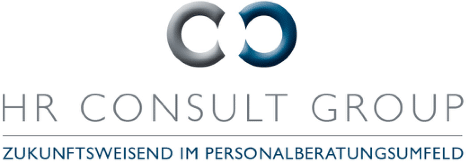Der erste Eindruck zählt – das gilt auch für das Onboarding neuer Mitarbeiter. Eine effektive Einarbeitung ist entscheidend für den langfristigen Erfolg und die Zufriedenheit der Mitarbeiter. In diesem Artikel werfen wir einen Blick auf bewährte Methoden, mit denen Unternehmen das Onboarding verbessern können.
- Strukturierte Einarbeitungspläne: Ein strukturierter Plan ist das A und O eines erfolgreichen Onboardings. Er sollte klare Ziele, Zeitrahmen und Zuständigkeiten umfassen. Dies gibt den neuen Mitarbeitern eine klare Vorstellung davon, was von ihnen erwartet wird und wie sie ihre ersten Tage und Wochen im Unternehmen gestalten sollten.
- Klare Ziele definieren: Der Plan sollte mit einer klaren Definition der Ziele beginnen. Diese Ziele sollten spezifisch, messbar, erreichbar, relevant und zeitgebunden (SMART) sein. Beispielsweise könnte ein Ziel sein, dass der neue Mitarbeiter bis zum Ende des ersten Monats mit den Kernsystemen und -prozessen vertraut sein sollte.
- Detaillierter Zeitrahmen: Ein effektiver Einarbeitungsplan legt fest, was in den ersten Tagen, Wochen und Monaten zu tun ist. Dies könnte eine Mischung aus administrativen Aufgaben, Meetings mit Schlüsselpersonen, Schulungssessions und praktischen Tätigkeiten sein. Ein Zeitrahmen hilft dabei, die Erwartungen sowohl des Mitarbeiters als auch des Unternehmens zu managen und stellt sicher, dass alle notwendigen Schritte in einer logischen und effizienten Reihenfolge abgedeckt werden.
- Zuständigkeiten zuweisen: Es ist wichtig, klar zu definieren, wer für welche Aspekte des Onboarding-Prozesses verantwortlich ist. Dies könnte der direkte Vorgesetzte, ein Teammitglied, der HR-Abteilung oder ein zugewiesener Mentor sein. Die Zuweisung von Zuständigkeiten sorgt dafür, dass der neue Mitarbeiter weiß, an wen er sich bei Fragen oder Bedenken wenden kann.
- Regelmäßige Überprüfung und Anpassung: Schließlich ist es wichtig, dass der Einarbeitungsplan regelmäßig überprüft und bei Bedarf angepasst wird. Dies stellt sicher, dass er weiterhin relevant und effektiv bleibt und die Bedürfnisse des neuen Mitarbeiters und des Unternehmens erfüllt.
- Frühzeitige Einbindung: Bereits vor dem ersten Arbeitstag sollten Unternehmen Kontakt aufnehmen. Ein Willkommenspaket, -video, Informationen zum ersten Arbeitstag und vorbereitende Materialien wie Kontaktdaten von Teammitgliedern oder Anleitungen für administrative Prozesse können Ängste abbauen und die Vorfreude steigern.
3. Persönliche Begrüßung: Ein herzlicher Empfang am ersten Tag hinterlässt einen positiven Eindruck. Eine Führung durch das Büro, Vorstellung bei den Kollegen und ein gemeinsames Mittagessen schaffen eine einladende Atmosphäre.
4. Paten- oder Mentorenprogramme: Die Zuweisung eines erfahrenen Mitarbeiters als Pate oder Mentor kann neuen Teammitgliedern helfen, sich schneller einzuleben. Diese Paten dienen als erste Anlaufstelle für Fragen und Unterstützung.
5. Regelmäßiges Feedback: Regelmäßige Check-ins, sei es durch direkte Vorgesetzte oder HR, sind wichtig, um den Fortschritt zu überwachen und Feedback zu geben. Dies hilft, eventuelle Probleme frühzeitig zu erkennen und anzugehen.
6. Schulungen und Weiterbildungen: Investieren Sie in Schulungsprogramme, die den neuen Mitarbeitern helfen, sich die notwendigen Fähigkeiten und Kenntnisse anzueignen. Dies zeigt, dass das Unternehmen in ihre Entwicklung investiert.
7. Integration in die Unternehmenskultur: Vermitteln Sie die Werte und Normen Ihres Unternehmens. Kultur ist ein entscheidender Faktor für das Zugehörigkeitsgefühl und die langfristige Bindung an das Unternehmen.
8. Nutzung digitaler Onboarding-Tools: Digitale Tools können den Onboarding-Prozess vereinfachen und effizienter gestalten. Sie ermöglichen eine zentrale Verwaltung von Dokumenten, Trainingsmaterialien und Kommunikation.
9. Feedback von neuen Mitarbeitern: Abschließend sollten Unternehmen Feedback von den neu eingestellten Mitarbeitern einholen. Dies bietet wertvolle Einblicke, um den Onboarding-Prozess kontinuierlich zu verbessern.
Eine effektive Einarbeitung legt den Grundstein für eine erfolgreiche und zufriedenstellende Karriere im Unternehmen. Durch die Umsetzung dieser Best Practices können Unternehmen sicherstellen, dass neue Mitarbeiter sich willkommen fühlen, schnell produktiv werden und langfristig an das Unternehmen gebunden bleiben.




